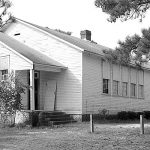
Up
The wonder that’s above
By Jenna Biter
I haven’t studied Latin, so I often have to consult the internet gods when it comes to etymology. When I thought about the word equinox and contemplated its roots, I looked to Google, and it told me that the word derives from the Latin for equal and night, which makes sense because the equinox occurs biannually when the sun crosses the celestial equator, and day and night are nearly equal in length. In the spring this happens around March 20 and, in the fall, Sept. 22.
This year the vernal equinox takes place on the eve of March 20 at 11:50 p.m. I did not know that off the top of my head; I only started researching the equinox when I couldn’t recall why it’s cold in the winter and hot in the summer. I looked that up, things spiraled and, four hours later, I’m onto the equinox, Lagrange points and protoplanetary disks. Most of what I learned I’ve now forgotten, but, forgive my tangential nature — it’s March, and the spring equinox is near. What a good reason to pause and look up.
I’ve long been fascinated by the cosmos but, until recently, only in a passive way. (I’ve mistaken Orion’s lower half for the Little Dipper my entire life, so I couldn’t have been that interested.) Still, my husband, Drew, and I drove 56 miles through the towering cacti of Saguaro National Park and the open ranges of the Tohono O’odham Reservation up 6,880 feet to participate in the dark sky discovery program at Kitt Peak National Observatory last December.
When we arrived at the peak, it was a little after 4 p.m. and only 30 degrees outside. We parked our Toyota rental and trotted toward the visitor’s center with beanies, neck warmers and an assortment of sweatshirts and coats piled high in our arms. After an hour of check-ins, tour guide introductions, an average turkey sandwich and a documentary I don’t quite remember, it was time to watch the sunset.
Escorted by one of the guides — a shorter woman with dark hair and fuchsia ski pants, Tanya, I think her name was — we weaved through the observatories that dotted the mountain, including one flanked by a garden flamingo. The mascot was a nod to the subtropical universities from which its scientists hailed. Not that the astronomers were physically in the dome. Professional astronomers watch the skies from the comfort of heated offices far away . . . unlike us.
A gap appeared between observatories, and we stopped. The sun, massive on the horizon, was about to dip out of sight and take with it the day. Meanwhile, Tanya explained the nature of light waves and why sunsets are mostly red. An audience member volunteered for a demonstration, and Tanya’s voice reached high and then low as she over enthused about the topic. She was like a lone actress playing all of the characters in a children’s puppet show.
The sun vanished, and we hurried down the hill toward a quieter guide, a middle-aged man of taller stature. He handed us and our six companions red flashlights to navigate the darkened slopes that led to our designated observatory. “No headlights, no phones, no white light of any kind,” he lectured. “It pollutes the viewing experience and scientific results.” (Of course, I was confused when he later shot a commercial grade laser pointer thousands of feet into the sky to circle constellations and planets. When asked about it, he said, “No one has complained.”)
After a five-minute walk, we arrived at our two-story observatory. The top floor housed the telescope and sat directly under the metal dome with a section that rolled back to reveal the night sky; it was unheated. Like white light, heat waves interfere with viewing. The bottom floor was unimpressive (I can’t remember exactly how it looked), but it was lit with red café lights and had a space heater for those who needed to escape the chill of the upper level. Drew and I refused to seek reprieve downstairs — partly because we’re competitive and, in unspoken agreement, wanted to “beat” the other viewers by withstanding the cold but, mostly, because we were mesmerized. I stole Drew’s neck warmer, wrapped it around my right foot and shoved it back into my sneaker. I wouldn’t leave the view from the dome.
Wide and untainted by manmade light, the weight of the heavens pressed down on us with all of its vastness. The stars were a net of twinkling lights cast into the black sea of deep space with the silvery mist of the Milky Way a swordfish tangled in its strands. I tilted my head back, and my lips parted in awe. The telescope purred on and located the first celestial object our guide wanted us to see, Venus. Then, it swung to Cygnus the Swan and binary stars that orbit one another and the Pleiades, an open cluster of stars that are gravitationally bound in Taurus the Bull.
At times, I struggled with the eyepiece — it was more difficult to use than I thought it would be — but Drew had a knack for it, and he helped me reposition so I wouldn’t miss a single sight. We saw the Andromeda galaxy, the farthest celestial body that can be seen without a telescope, Cassiopeia and 10 or 15 other objects before our tour of the universe neared its end.
With only time enough left for one more object, we studied Orion the Hunter. His right shoulder was flickering and warm, a dying star named Betelgeuse. It resembled a candle about to burn out, only it burns trillions of light years away. Finally, we shifted our eyes to Orion’s Nebula, a stellar nursery, in the middle of his sword. Stars being born into the universe with existences to unfold. I felt so small, so wonderfully small, staring up at the lives of titans. The birth and death of the cosmos, I thought, what a good reason to pause and look up. PS
Jenna Biter is a fashion designer, entrepreneur and military wife in the Sandhills. She can be reached at jenna.l.knouse@gmail.com.





